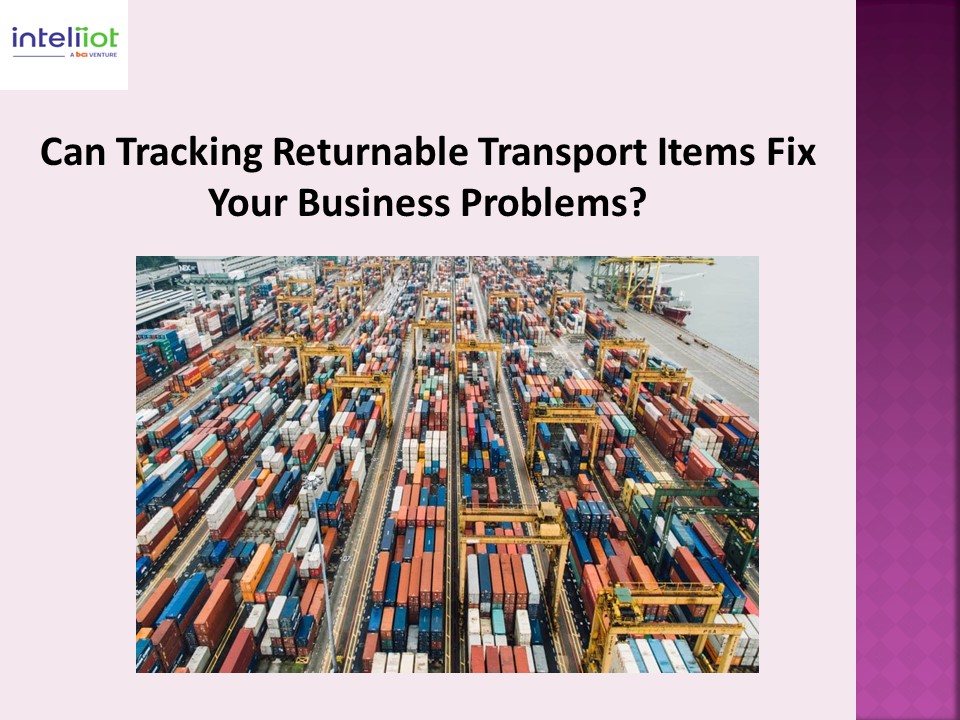Asset Management RFID Tracking - Inteliiot PowerPoint PPT Presentation
Title: Asset Management RFID Tracking - Inteliiot
1
Can Tracking Returnable Transport Items Fix Your
Business Problems?
2
Returnable transport items (RTIs) are
increasingly becoming more popular among
businesses exploring opportunities to improve
sustainability, increase efficiency, and optimize
costs. RTIs are used in all industries that rely
on supply chains for moving inventory from one
location to the other. Some popular RTIs include
bins, kegs, totes and boxes, drums and
pallets. Typically, IoT (Internet of Things) is
used to track and monitor the movement and use of
these items. RTIs equipped with IoT sensors and
connectivity can transmit data about their
location, condition, and usage to a central
system. This data can be used by logistics
companies to optimize their transportation routes
and schedules and to identify any issues with the
RTIs that may need maintenance or repair. IoT
technology can also be used to automate certain
processes related to the use of RTIs. For
instance, sensors can be used to trigger
automated alerts when an RTI needs to be returned
to its starting location, or when it needs to be
cleaned or repaired. This can help improve
efficiency and reduce the risk of errors in the
transportation process.
3
Benefits of tracking RTIs Businesses that opt for
RTIs can realize a range of benefits, including
cost savings, improved sustainability, enhanced
supply chain efficiency, and improved product
protection. Some of the main benefits of
utilizing RTIs are elucidated below Better
control over inventory Returnable transport items
can easily be tracked using RFID technology, so
teams are always aware of which partner has what
in their possession. Handheld readers can gather
information from multiple inventory items at
once, expediting the tracking of goods and
eliminating errors that arise due to human
intervention. It also helps to understand if a
part of the inventory has been lost or stolen,
reducing the costs of replacing items. It also
improves the accountability of partners involved
in a supply chain owing to the traceability it
provides. Smoother supply chain Thanks to RFID
technology, RTIs can be tracked at all times.
This allows supply chain managers to keep a close
eye on any bottlenecks that might arise. This
information can be used to quickly iron out any
creases in your supply chain, eliminating
roadblocks and minimizing delays.
4
Optimized stock amounts Since utilizing RTIs
provides improved visibility, all parties can
track the number of returnable assets they have
access to and therefore can understand if they
need to reduce or increase stocks. Increased
inventory visibility allows businesses to have a
better understanding of stocks and reduce
overstocking. Better communication among
partners All involved parties can track assets at
all times and are aware of the amounts present in
a consignment, enabling better communication
among partners and fewer disputes. Cost
savings RTIs can be used multiple times, which
means that businesses do not have to constantly
purchase new packaging materials. This can lead
to significant cost savings over time. Improved
sustainability RTIs are a more environmentally-fri
endly option compared to disposable packaging
materials, as they can be reused instead of
thrown away. This can help businesses reduce
their carbon footprint and improve their
sustainability efforts.
5
Enhanced supply chain efficiency RTIs can help
streamline the supply chain by reducing the need
for multiple packaging materials, which can lead
to improved efficiency and lower costs. Improved
product protection RTIs are often designed to
provide better protection for products during
transportation, which can reduce the risk of
damage and improve customer satisfaction.
6
To Conclude Tracking RTIs can help companies
better manage their supply chain operations and
improve efficiency, traceability, and customer
service. Racking RTIs can help companies identify
any lost or damaged items, which can help reduce
the need for replacement items and result in cost
savings. Tracking RTIs can help companies better
manage their inventory and optimize the use of
their RTIs. For example, they can identify when
an RTI is empty and ready to be returned, or when
an RTI is at capacity and needs to be shipped
out, so there are no opportunities lost. Keeping
a track of RTIs also helps companys better trace
the movement of goods within their supply chain.
This can be useful for quality control purposes
and for meeting regulatory requirements. It also
enables companies to accurately predict delivery
times and provide better estimated time of
arrival (ETA) information to customers. If you
want to know more about how tracking RTIs can
help your business, please feel free to get in
touch with us.
7
Inteliiot utilizes RTIs to meet a clients
specific needs and to solve many business
problems for reputed clients. Inteliiot is a
tech-enabled company that unleashes the power of
IoT to help you improve your business using
various services. By helping our customers create
more goods and services while using fewer
resources, we at Inteliiot are contributing
towards building leaner and more responsible
supply chains.

